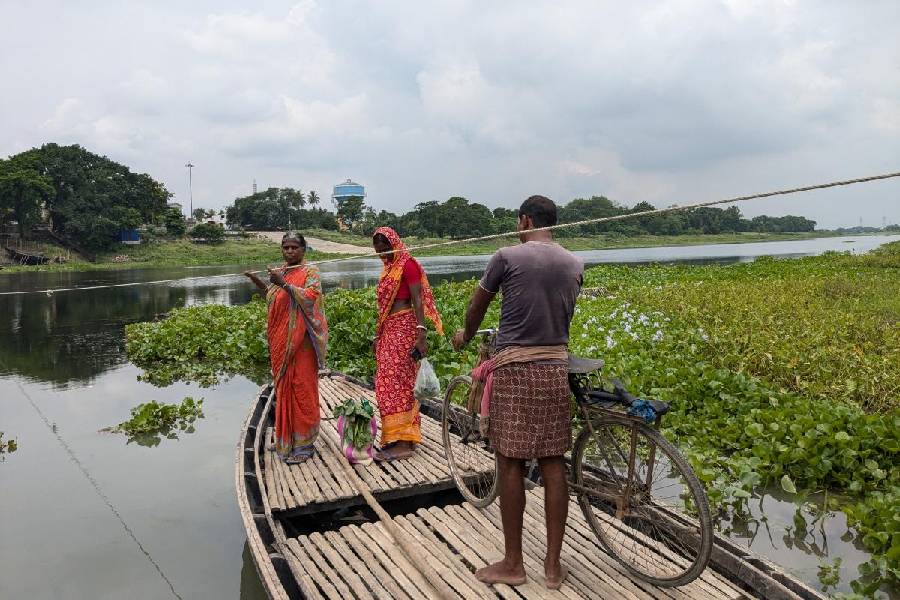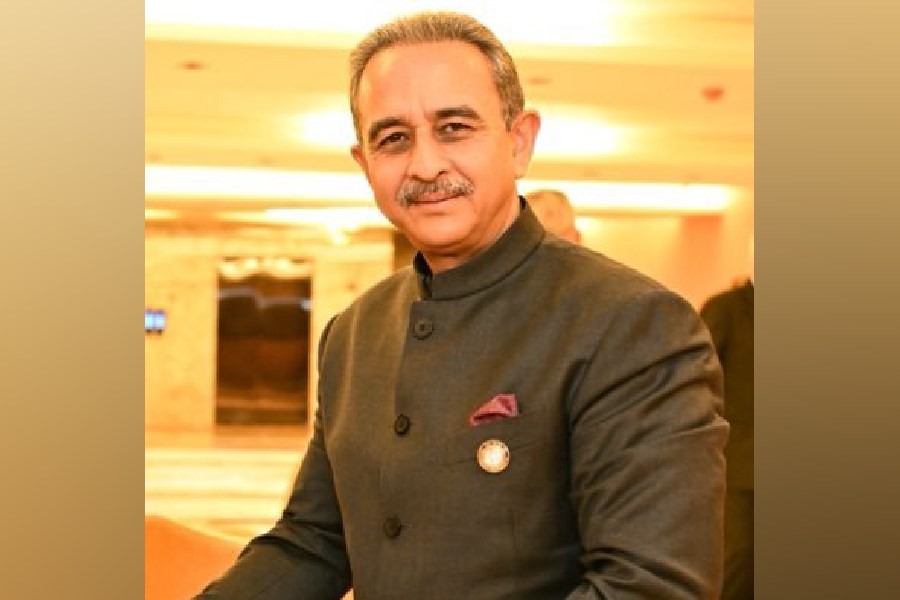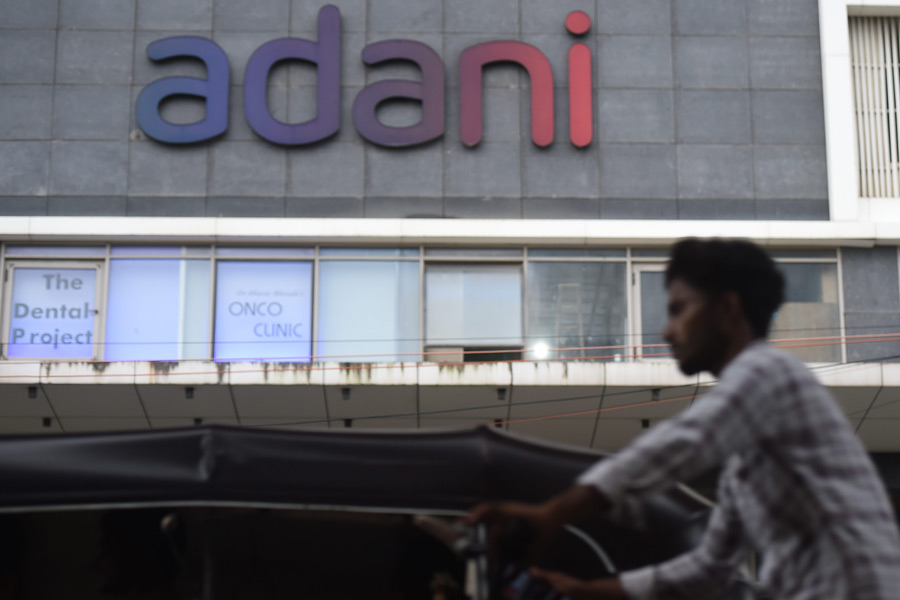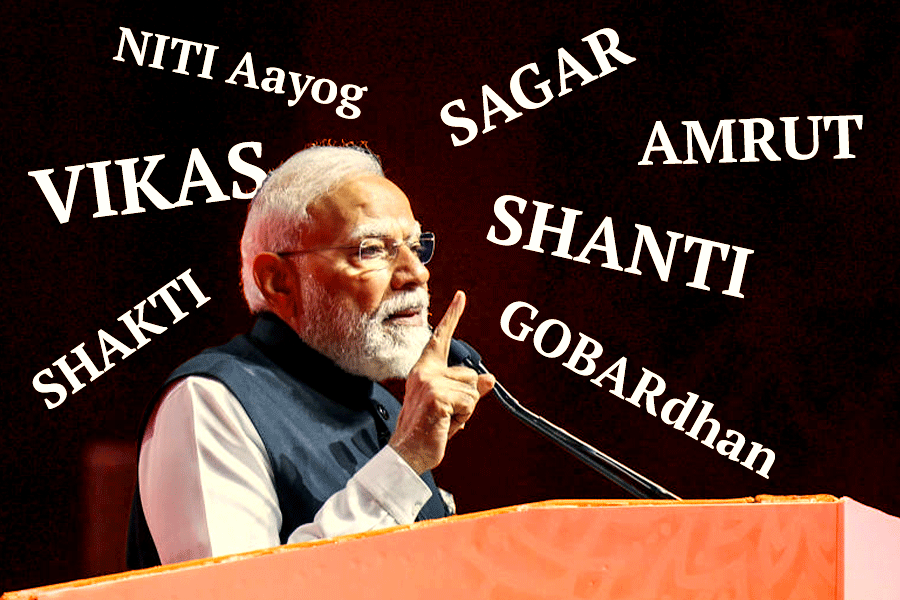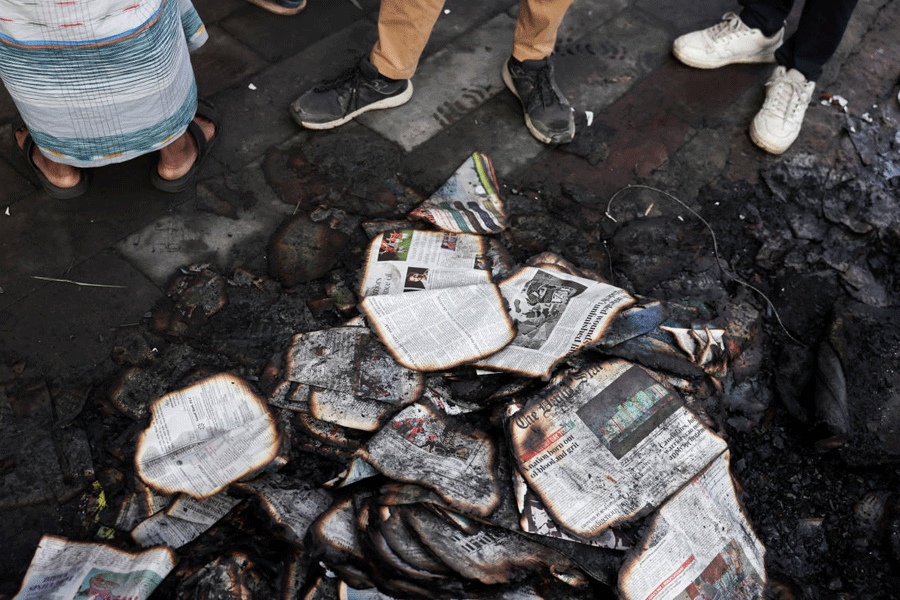Budhia Choudhary of Goari on the outskirts of Krishnanagar has only one prayer. “I want the Jalangi river to survive as long as I live,” the 60-year-old tells The Telegraph.
We are at Kadamtala Ghat. I am headed upstream the Jalangi and she is there doing what she does every day — ferrying people from Goari to Mayakol, a village in neighbouring Nadia. Her passengers are students, teachers, farmers and women looking to travel to see a doctor, buy new clothes and even groceries.
To Mayakol and back takes 10 minutes; it is a narrow stretch. A ride costs ₹5. Upon returning to Kadamtala Ghat, she has to wait for a swell of passengers. When there are at least three people, she ferries them. The men talk about price rise and politics. The women talk about daily expenses, share stories about their daily grind, their loves and quarrels.
Lack of connectivity and the absence of any bridge in this area has made the boatwoman’s services indispensable to villagers, it has earned her respect and support from the community. Her boat is available on call even past midnight, in case of a medical emergency. At Kadamtala Ghat everyone refers to her as “Budhiadi”.
Along comes farmer Babu Ghosh; he does not want to pay the fare in cash. Instead, he promises Budhiadi a bunch of bananas on his way back from Mayakol. Budhiadi says, “Very often my payment is in kind.” It could be wheat, corn, mustard or lentils. Sometimes bananas or a basket of mangoes. Her income varies from ₹50 to ₹100 a day. “Some people can’t afford to pay at all. I let them go,” she adds.
Budhiadi owns three boats — a ferrying boat, a dinghy meant for fisherfolk and a decrepit boat for goods. The last lies upturned in one corner of the ghat. “This is the one I am rebuilding,” she says. “The carpenter painted the hull yesterday. Now it needs three layers of tar which will prevent water from penetrating the wood...”
From the time she starts work at six in the morning right up to eight at night, the only time at Budhiadi’s disposal which she can call her own is the afternoon. That is the time when she and I catch up and her story comes out.
Two decades ago, she was content to look after home and hearth and being married into a family of wealthy boatmen. Her father-in-law had created a fleet of 18 boats. His ancestors had arrived in the region years ago from Jaunpur in Uttar Pradesh where they rowed boats on River Gomti.
But a time came when much like the river she has built her life around, Budhiadi’s life too turned a sharp corner and that picture of prosperity and well-being vanished.
Her husband fell ill — a debilitating kidney ailment ravaged his health. She recalls the early days when she struggled with the heavy oars. “The boat kept deviating from its path. I had to push bamboo poles to bring it back on track,” she says.
Budhiadi eventually realised that she was not strong enough to row the boat and that was not going to change. She tied a rope to two trees, one on either side of the river, to help her propel the boat. A tug at the rope and the boat slid along the waters in a straight line. By the time she mastered the rope trick, her husband died.
In the years that followed, Budhiadi forged a friendship with the Jalangi. If she whispered to it her own struggles, she also keenly observed how over the years the river changed drastically. “When I started rowing, it used to be deep, at least 20 arm lengths, way more than you see now,” she says. “It used to abound in fish. You could use a gamccha to catch a variety of small fish including maya and varieties of puti.”
Those were the days when pilgrims used to hire her boat to travel to Mayapur, the confluence of Jalangi and Bhagirathi. A trip to the holy shrine would fetch her ₹300. “I would have to hire an oarsman,” she says.
The Jalangi has been dying for nearly a century, but mindless human interference is now hastening its end. The river is no longer navigable in many places.
At Kadamtala Ghat, water hyacinth and other aquatic plants that grow in stagnant water, can be found in abundance. “Before I row the boat. I have to remove them,” says Budhiadi.
Environmentalist Sankha Subhra Chakraborty explains that the problem is the algal bloom in the stagnant water that spreads toxins. Contact with toxic water causes rashes and itching. Budhiadi holds up her hands for me to see.
Gopa Samanta, who has done extensive research at the cutting edge of gender studies and hydraulic environments, believes that the life of the river syncs with Budhiadi’s.
She met the boatwoman some months ago while on a trip to Krishnanagar, and ever since she has been leading a fundraising initiative to help her rebuild her newest boat. Says Samanta, “She’s exceptional. Unlike most women who dream of settling down in a cosy home, she has decided to invest in a boat, and by association in a fleeting and uncertain livelihood.

